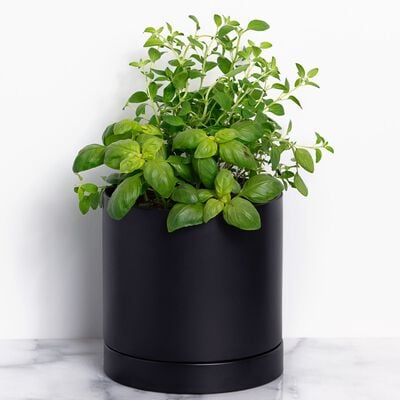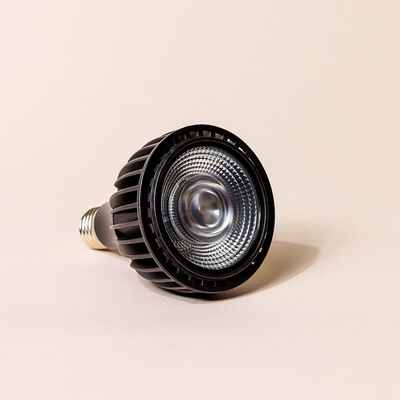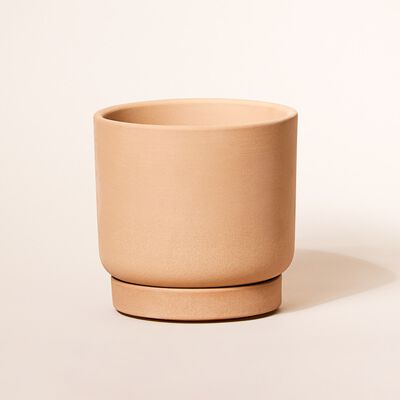
Your Guide To: Basil
Everything you need to know to care for this sun-loving potted herb.
Growing your own basil plant is a great way to support your pesto habit, but this sweet and savory herb is capable of so much more. Fresh or dried, basil is a perfect partner for tomatoes — think bruschetta, marinara sauce, and caprese salads or sandwiches — and plays a natural part in most Italian dishes. Plus it's delicious with fresh fruit and is a vibrant addition to salads, vinaigrettes, cocktails, and desserts.
Basil's simple elegance and great aroma make it a joy to have as part of your home decor. Enjoy cut stems in a small glass or vase of water as you're preparing your pizza or pasta meal to dial up the ambience.
How to Keep a Basil Plant Happy
Basil is traditionally grown outdoors, but it will thrive inside if it gets enough light. As a low-maintenance plant and a highly versatile herb, basil is a great choice for first-time gardeners and cooks of all levels.

How Much Lighting Does a Basil Plant Need?
Basil plants are sun lovers. They will be happiest and most productive on a sunny sill, preferably on a south-facing or even west-facing window where they can enjoy direct sunlight for six or more hours. If your basil plant doesn't seem to be getting enough light, you can add a fluorescent lamp or even a grow light to its environment to help.
How Do I Know When To Water My Basil Plant?
Basil likes well-drained soil that feels moist, but not soggy. During peak growth times in spring and summer, you may need to water every day. You'll know it's time when the top 25% of soil is dry. Use your finger to test or take the guesswork (and your finger) out of it, and use a plant moisture indicator from our shop.
To water, use a small container or watering can to pour water out slowly, directly onto the soil, moving in a clockwise motion to evenly water the plant's roots. Be sure to dump any extra water that drips into the tray at the bottom of your plant so the roots don't sit in it.
How Do I Use Plant Food for My Basil Plant?
Plant food is an important part of fostering healthy growth and new leaves as your plant settles into its new digs.
For a kitchen-sized basil plant in a container that's 5-7 inches in diameter, insert the number of plant food spikes (included with your Greendigs plant purchase) indicated in the package directions into the soil once every month during spring and summer. In fall and winter your basil plant's growth will be slow so you only need to feed it every two months. Yes, even though your plant lives inside, it still experiences the seasons.
What Is a Basil Plant's Ideal Environment?
Basil plants do well when they can absorb water from the air. Misting your basil plant a few times a week is also beneficial.
Good air flow around your basil plant is important to prevent fungus. Also, basil plants are sensitive to the cold. For the best growth, keep the average room temperature in your home between 60 and 80 degrees, and keep your basil plant out of drafty areas.

How Do I Prune and Maintain My Basil Plant?
Your Greendigs basil plant is fairly low-maintenance, but benefits from occasional pruning. Trimming off the top of the plant encourages new growth. Pinching the growing points creates a bushier, more compact plant. Snip off any flowering stems as soon as you spot them — likely mid-summer — to promote new, good-tasting leaves. Keep a pair of pruning shears on hand and this job will be a little easier.
Each time you water your basil plant, rotate the container a quarter turn. This way you'll make sure it gets the same amount of light on all sides. Our plant trivet set makes this easy and stylish, too.
How Do I Harvest My Basil Plant?
Your basil plant will be ready to harvest as soon as it arrives. Pick only what you need to use in the moment to ensure the freshest, best-tasting results. Also be sure not to harvest more than one-third of the plant at a time. You can pluck basil leaf by leaf and use the fresh leaves any way you’d like.
You can also store fresh-cut stems of basil in a glass jar or small vase with room temperature water — like fresh-cut flowers — for up to five days. Keep basil out of the refrigerator, where it will turn brown.
You can set basil leaves on your kitchen counter to let them dry out for a bit, or use a food dehydrator to make it more like what you’d find in a spice jar.
For a little extra help in the kitchen, try using our Pull and Pinch Herb Harvester to quickly and easily separate the leaves from their stems.

How to Address Common Basil Plant Issues
- Wilting leaves could be a sign that you are underwatering your basil plant.
- Yellowing, drooping leaves may mean your plant is overwatered (if you've watered it in the last couple days). If this happens, stop watering and make sure your basil plant is in a sunny spot where it can dry quickly.
What to Do If You Still Have Questions
If your basil plant doesn't seem to feel at home in your space, we're here to help. Chat live with a Greendigs representative on our website or shoot us an email at [email protected].


